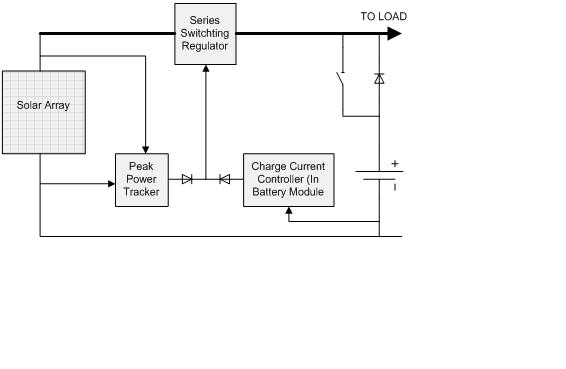power control
Power Regulation and Control
There are three main types of power system architectures: sun regulated, fully regulated, and peak power tracking. The peak power tracking is suitable for large variations in solar array input energy and maintains a constant voltage on the bus. Since we have sensitive instruments attached to this bus, such as the radar altimeter, the bus voltage should be held as constant as possible. The sun regulated architecture is a cost effective solution, but relies on the output of the solar panels to dictate the voltage on the bus. Fully regulated solutions are more expensive, complex, and well suited for high power requirements (>2kW). Therefore Crescent Comm will use a peak power tracking regulation and control system. A schematic of this architecture can be seen below.

In this architecture, the Series Switching Regulator reduces the output solar panel voltage to the desired 28VDC level. In addition, it is always removing power from the array to increase efficiency, since solar panels decrease in efficiency when they are heated.
This architecture will be accomplished by Terma’s PMAD system for science missions. It is specifically designed for smaller research applications like ours and is meant for peak power tracking power systems. In addition, thermal dissipation will be handled by this system as well and will be transferred to the spacecraft structure. A general photo of this module can be seen in the following figure.

Distribution and Protection
The protection mechanisms in the power system are in place to protect the power system from internal faults or load faults. Each main subsystem circuit will be separately protected with fuses. When, a fault does occur, the fuse will be blown quickly to reduce damage to the system. Therefore, the battery will be used during this instant to dump current into the fuse to blow it as fast as possible.